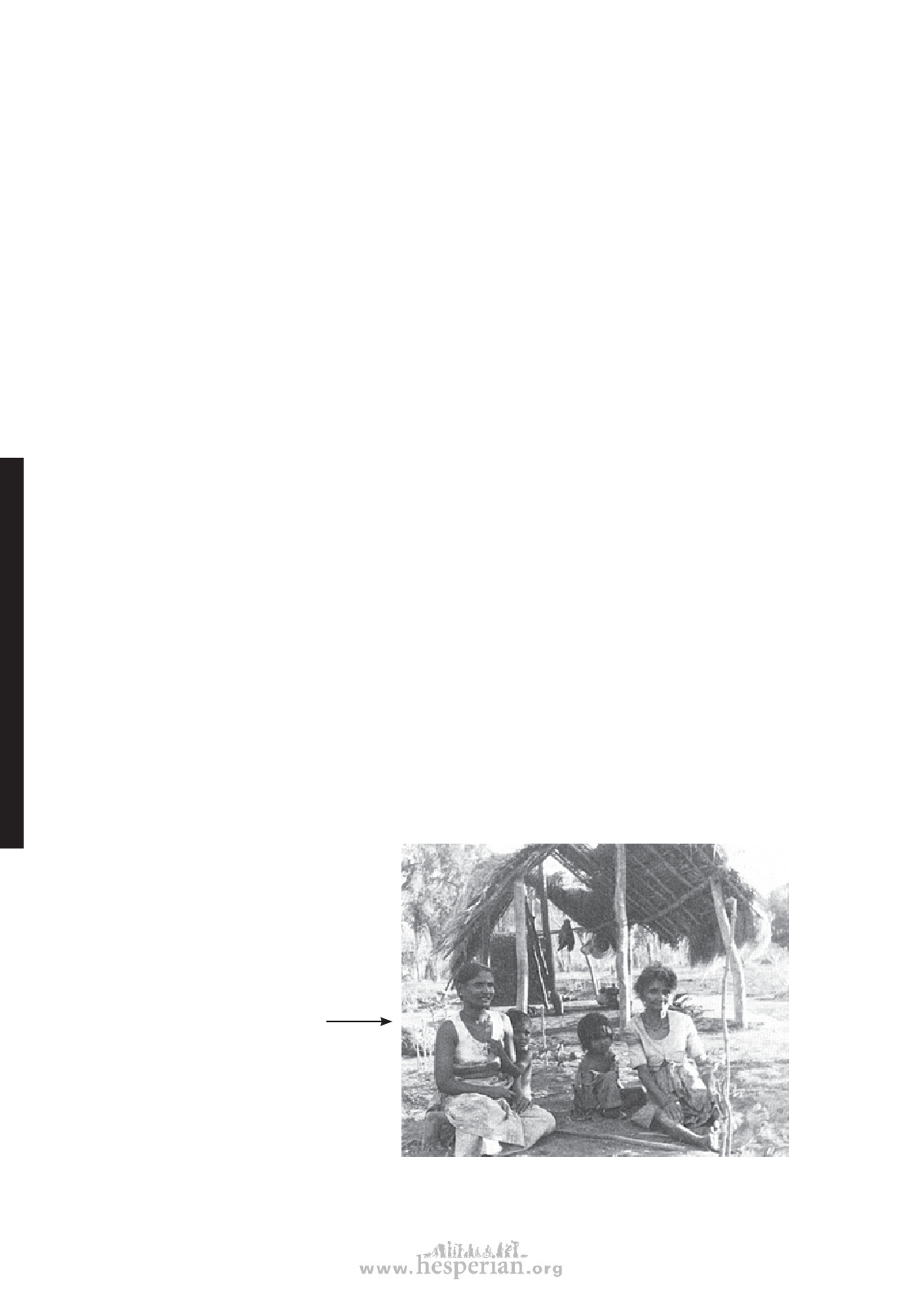
402 chapter 44
In every society, disabled children have the same social needs as other children.
They need to be loved and respected. They need to play and explore their world with
other children and adults. They need opportunities to develop and use their bodies and
minds to their fullest ability, whatever that may be. They need to feel welcome and
appreciated by their family and in their community.
Unfortunately, in most villages and neighborhoods, disabled persons—including
children—are not given the full chance they deserve. Too often people see in them only
what is wrong or different without appreciating what is right.
DIFFERENT COMMUNITIES REQUIRE DIFFERENT APPROACHES
The way people treat disabled persons differs from family to family, community to
community, and country to country.
• Local beliefs and customs sometimes cause people to look down on disabled persons. For
example, in some places, people believe that children are born disabled or deformed because
their parents did something bad, or displeased the gods. Or they may believe that a child was
born defective to pay for her sins in an earlier life. In such cases, parents may feel that to correct
a deformity or to limit the child’s suffering would be to go against the will of the gods.
• Lack of correct information often leads to misunderstanding. For example, some people think
that paralysis caused by polio or cerebral palsy is ‘catching’ (contagious), so they refuse to let
their children go near a paralyzed child.
• In many societies, children who have seizures or mental illness are said to be possessed by the
devil or evil spirits. Such children may be feared, locked up, or beaten.
• Failure to recognize the value and possibilities of disabled persons may lead to their
being neglected or abandoned. In many countries, parents give their disabled children to their
grandparents to bring up. (In return, many of these children when they grow up take devoted care of
their aging grandparents.)
• Fear of what is strange, different, or not understood explains a lot of people’s negative
feelings. For example, in communities where polio is common, a child who limps may be well
accepted. However, in a community where few children have physical disabilities (or where most
who do are kept hidden), the child with a limp may be teased cruelly or avoided by other children.
• How severe a disability is often influences whether or not the family or community gives the
child a fair chance. In some parts of Africa, children with polio who manage to walk, even with
braces or crutches, have a good chance of becoming well accepted into society. The opposite is
true for children who never manage
to walk. Even though most could
learn important skills with their hands
and perhaps become self-sufficient,
the majority of non-walkers die in
childhood, largely from hunger or
neglect.
• Where poverty is extreme, a child’s
disability may seem of small
importance. When this family
in Sri Lanka was asked about
their disabled child, the mother
said her biggest worry was that the
roof of their hut leaked. The village
rehabilitation workers organized
neighbors to help build a new roof.
Only when the basic needs of food and
shelter were met, could the mother
give attention to her child’s disability.
(Photo: Philip Kgosana, UNICEF, Sri Lanka.)
Disabled village Children